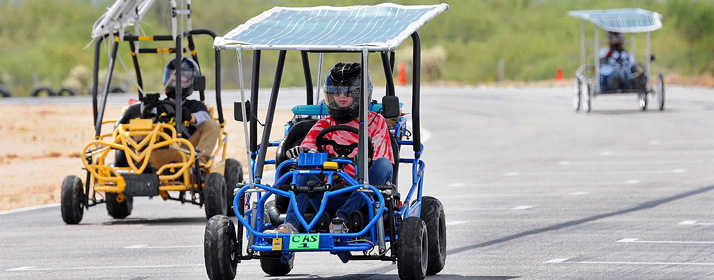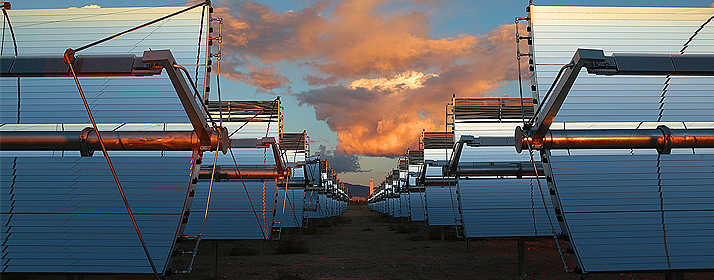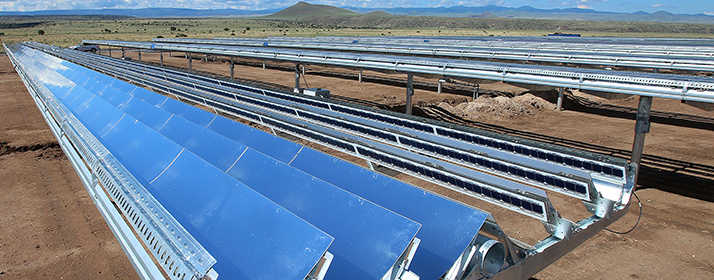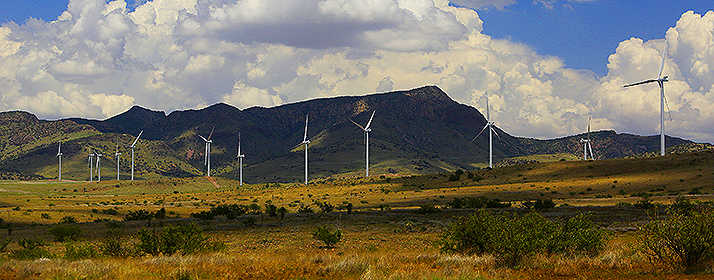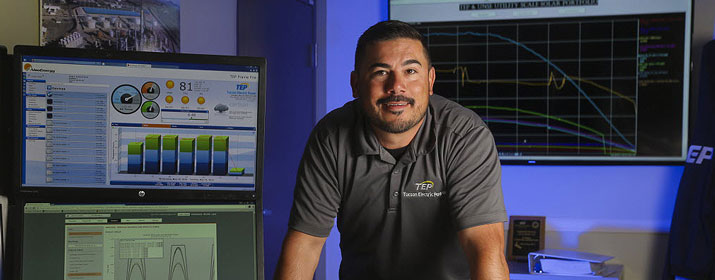
From an office at TEP’s Irvington campus in Tucson, Gabriel Torres can easily see how well solar sites are operating around the state.
With real-time data from company-owned photovoltaic facilities integrated into our Energy Management systems, all it takes is a few clicks on his computer. Gabriel can look at a big screen mounted on the wall, as well as four smaller computer screens, to see colorful line graphs and charts tracking the energy production at seven locations. These sites are home to renewable resources that produce power for customers of TEP and sister company UniSource Energy Services (UES).
Efforts are also underway to retrofit existing sites and add additional controls where possible to utilize more options. “I know at a glance how well each system is operating,” said Torres, Lead Associate Engineer in Distribution Energy Resources.
A major expansion of solar power resources that began about six years ago was accompanied by improvements to the maintenance and oversight of these facilities. The in-house “DG Operations” station was created to track production, maintenance, and repairs of systems owned and operated by TEP and UES, including facilities in Springerville, Kingman, Fort Huachuca, Rio Rico and Tucson.
It didn’t used to be this efficient.
The company previously used third-party monitoring solutions to keep an eye on the locations. From Tucson, Torres would have to log on to multiple vendors’ sites to see what was occurring. When there were issues with these systems, he or a contractor would have to drive to the location and troubleshoot the problem with the vendor over the phone.
Now, Torres can do much of the work from a single dashboard. If problems occur, such as a malfunctioning solar inverter, he often can take care of it remotely. If the issue requires maintenance, he’ll send a contractor or the vendor to fix it.
Plus, the new system gives precise details about each inverter and tracks the weather, including solar irradiance, temperature, humidity and wind that can affect production.
“It makes it a lot easier to monitor and control these systems with everything consolidated and in-house,” Torres said.
Chris Lindsey, Manager of Distribution Energy Resources, said Gabriel had the foresight to realize that there needed to be a plan for servicing and maintaining company-owned renewable systems.
“When solar really starts to become a big part of the generation mix, it becomes more important to make sure that it’s running as it should be,” Lindsey said. “Having the sites run well all of the time is going to be critical.”
While most of the company’s renewable energy is provided through power purchase agreements, TEP and UES have significantly expanded their company-owned systems from less than 5 megawatts (MW) at the beginning of 2010 to more than 50 MW today. Those systems are part of total renewable portfolio with more than 300 MW of capacity.
The company began building its in-house monitoring systems in 2014 and will continue to expand them as the companies’ renewable portfolios continue to grow.
“We’re going to keep improving on it as time goes on,” Torres said.

